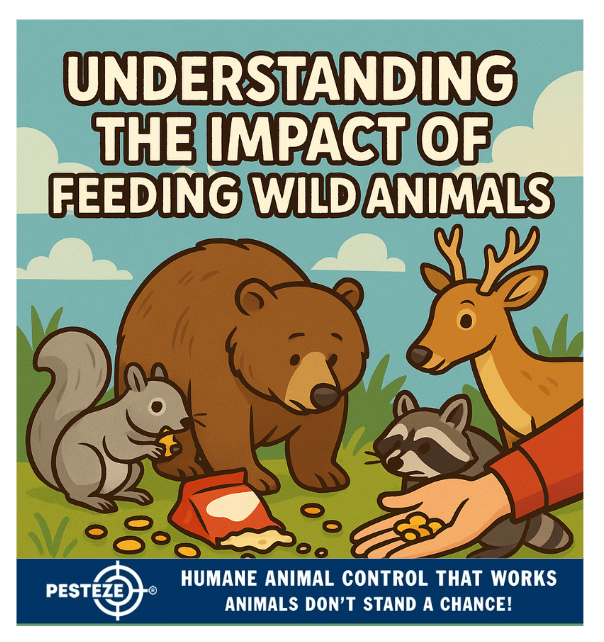UNDERSTANDING THE IMPACT OF FEEDING WILD ANIMALS

UNDERSTANDING THE IMPACT OF FEEDING WILD ANIMALS
SUMMARY
Feeding wild animals may seem kind, but it can cause harm. This guide explains how feeding wildlife affects their health, behavior, and ecosystems.
FEATURES
-
Disrupts natural diets: Processed foods harm animal health.
-
Creates dependency: Animals may lose survival skills.
-
Encourages aggression: Increases risk of attacks on humans.
-
Spreads disease: Feeding sites attract multiple species.
-
Harms ecosystems: Alters population balance and behavior.
-
Legal consequences: Feeding bans exist in many regions.
GUIDE DESCRIPTION
Feeding wild animals is often done with good intentions. People may offer food to birds, deer, raccoons, or squirrels to feel closer to nature or to help them during harsh seasons. However, understanding the impact of feeding wild animals is crucial, because this practice often does more harm than good.
One major issue is that feeding disrupts natural diets. Human foods, especially processed snacks, can be unhealthy or even toxic for animals. Even foods that seem harmless may cause malnutrition or digestive issues.
Feeding also creates dependency. When animals learn to rely on humans for food, they may lose their ability to forage effectively. This dependence can reduce survival skills and make them vulnerable if food handouts stop.
Additionally, feeding can encourage aggression. Animals that associate people with food may approach more boldly, leading to dangerous encounters. Bears, raccoons, and other species may become aggressive if food is not provided, increasing risks for both humans and animals.
Feeding spots often gather multiple animals together, which can spread disease. Close contact at feeding sites allows parasites, viruses, and bacteria to pass quickly through populations. This can weaken entire groups of wildlife and even affect domestic pets.
On a larger scale, feeding harms ecosystems. By artificially increasing food availability, certain species may overpopulate, throwing off the natural balance. This can lead to overgrazing, predation shifts, and competition with other animals.
It’s also important to note that in many areas, feeding wildlife is illegal. Laws are in place to protect both animals and humans from the negative effects of feeding. Violations can result in fines or penalties.
Instead of feeding wild animals, consider alternatives such as planting native vegetation, setting up birdhouses, or providing safe water sources. These actions support wildlife naturally without disrupting their survival instincts.
By avoiding direct feeding and supporting natural habitats, you help ensure that wild animals remain healthy, independent, and safe within their ecosystems.
- Saneeth Thota


Comments 0